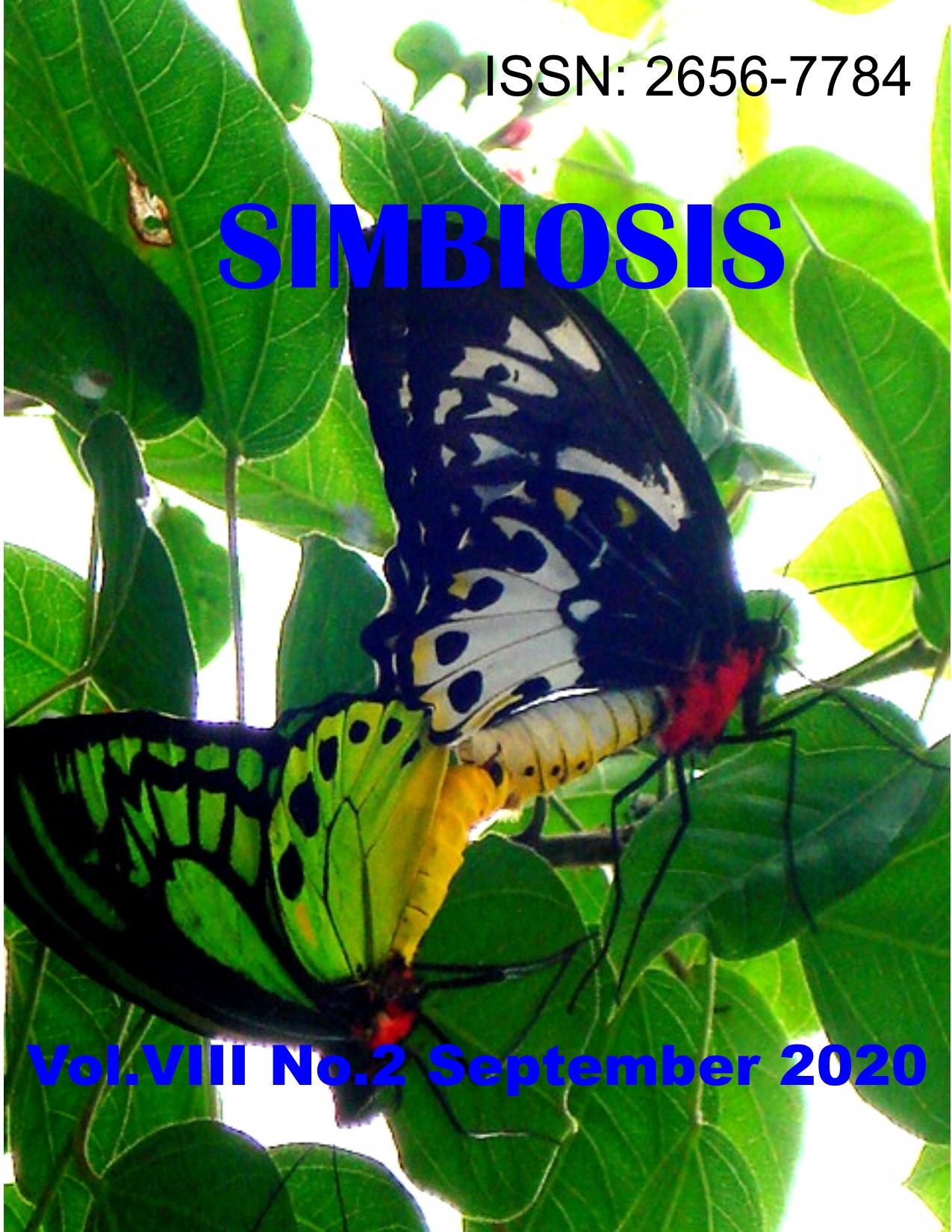KEBUTUHAN BULU MERAK HIJAU (Pavo muticus muticus) UNTUK REOG PONOROGO
Abstract
Abstract. Reog is one of Indonesian art which is origin from Ponorogo, East Java. Barongan (dadak merak), the most dominant element of this art using the part of protected animals the green peafowl (Pavo muticus)’s feathers. In 2018, we do research to one green peafowl breeder and four “barongan” maker’s groups in Ponorogo District. Our research result found that to make single “barongan”, they need about 900-1200 feathers which is similar with 6-10 male green peafowl. Our data also shows that every groups produce about 20 “barongan” in every year. The only one green peafowl breeder in Ponorogo who has 12 adult male only can supply for one maker group. So, if we want to make reog ponorogo recognized as a world heritage, we need 20 green peafowl breeders which have 6-10 adult male individual.
Downloads
References
BirdLife International. 2001. Threatened birds of Asia: the BirdLife International Red Data Book. BirdLife International, Cambridge, U.K.
Brickle, N.W. 2002. Habitat use, predicted distribution and conservation of green peafowl (Pavo muticus) in Dak Lak Province, Vietnam. Biological Conservation 105(2): 189-197.
CITES. 2020. Pavo muticus. Available at https://checklist.cites.org. (Accessed: 17 Juli 2020)
Hernowo, J.B. 1995. Ecology and behavior of the green peafowl (Pavo muticus Limnaetus 1766) in the Baluran National Park, East Java, Indonesia. Faculty of Forest Science. Georg August University Gottingen. Gottingen.
Hernowo, J.B. 1999. Habitat and local distribution of javan green peafowl (Pavo muticus muticus Limnaetus 1758) in Baluran National Park, East Java. Media Konservasi. Vol. VI (1): 15-22
Hoogerwerf. A. 1970. Ujungkulon the land of the last javan rhinoceros. E.J.Brill Leiden. Netherland
IUCN. 2020. IUCN Red List of Threatened Species (ver. 2020.2). Available at: http://www.iucnredlist.org. (Accessed: 17 Juli 2020).
MacKinnon, J., Phillipps, K. & Balen, S. van. 1998. Burung-burung di Sumatera, Jawa, Bali dan Kalimantan (termasuk Sabah, Sarawak dan Brunei Darrussalam). Puslitbang Biologi-LIPI Jakarta.
Setiadi, T. 2012. Predicting the Distribution of Green Peafowl Pavo muticus in Java Indonesia Using A Species Distribution Model. Dissertation submitted to the University of East Anglia, in partial fulfilment of the requirements for the degree of Master of Science in Applied Ecology – European Programme.
Van Balen. 1988. Forest fragmentation and the survival of forest birds in Java: a preliminary report in Proceeding of the Deutscher Akademischer Nachkontakt Seminar. pp.155-165.
Van Balen. D. Prawiradilaga; M. Indrawan; A. Marakarmah; I.W.A. Dirgayusa & M.A. Isa. 1991. Notes on the distribution and status of green peafowl on Jawa. World Pheasant Association-Worldwide Fund for Nature-Indonesia Programe. Bogor
Van Balen, S., Prawiradilaga, D.M. & Indrawan, M. (1995) The distribution and status of green peafowl Pavo muticus in Java. Biological conservation, 71, 289–297.
Wardani, R.B. 2015. Perkembangan bentuk Dhadhak Merak dalam pertunjukan Reog tahun 1995-2005 di Kabupaten Ponorogo. Skripsi Jurusan Seni dan Desain Fakultas Sastra-Universitas Negeri Malang

This work is licensed under a Creative Commons Attribution 4.0 International License.










